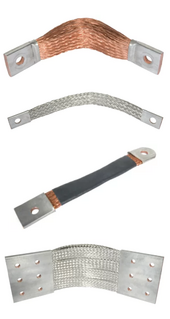Hi, what's the best way to connect two components that both have studs, do you just need to cut a very short length of cable with a lug on either end? I've seen diy bars of flat copper drilled through to create a hole-hole conductor but am having trouble finding an off the shelf equivalent.
Context being: Im designing my first system (fully off grid) and trying to make it work with a 3000w/12v inverter I already have (which I now realize was probably a bad buy).
I'm leaning towards a 6x100ah, 12v parallel bank going to bus bars, and a 9in 4/0 wire going from the bus bar to my inverter. The fuse(holder) to bus bar connection is where I have two studs and don't know a straight forward way to connect them.
Also, I am starting to question whether it's worth it to just go ahead and shift to 48v so if you want to make arguments for that feel free though I'd still like an answer to making stud to stud connections for the future.
I'm looking at this fuse per recommendations on Will's site. https://www.currentconnected.com/product/mega-fuse-holder-bundle/
Thanks!
Context being: Im designing my first system (fully off grid) and trying to make it work with a 3000w/12v inverter I already have (which I now realize was probably a bad buy).
I'm leaning towards a 6x100ah, 12v parallel bank going to bus bars, and a 9in 4/0 wire going from the bus bar to my inverter. The fuse(holder) to bus bar connection is where I have two studs and don't know a straight forward way to connect them.
Also, I am starting to question whether it's worth it to just go ahead and shift to 48v so if you want to make arguments for that feel free though I'd still like an answer to making stud to stud connections for the future.
I'm looking at this fuse per recommendations on Will's site. https://www.currentconnected.com/product/mega-fuse-holder-bundle/
Thanks!



